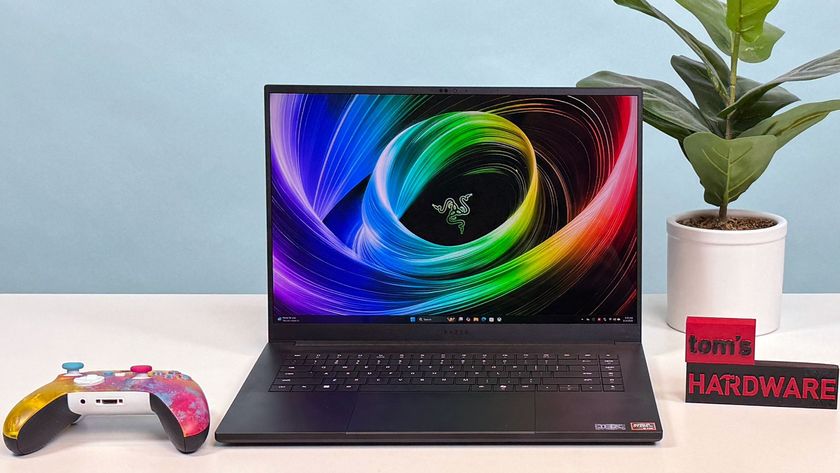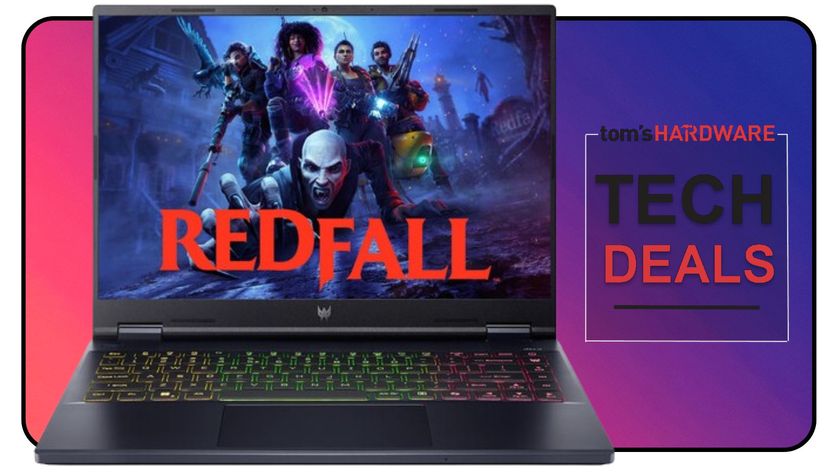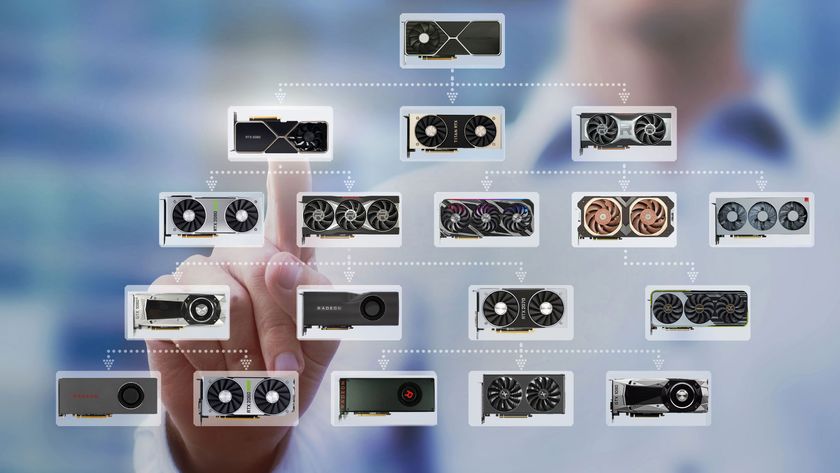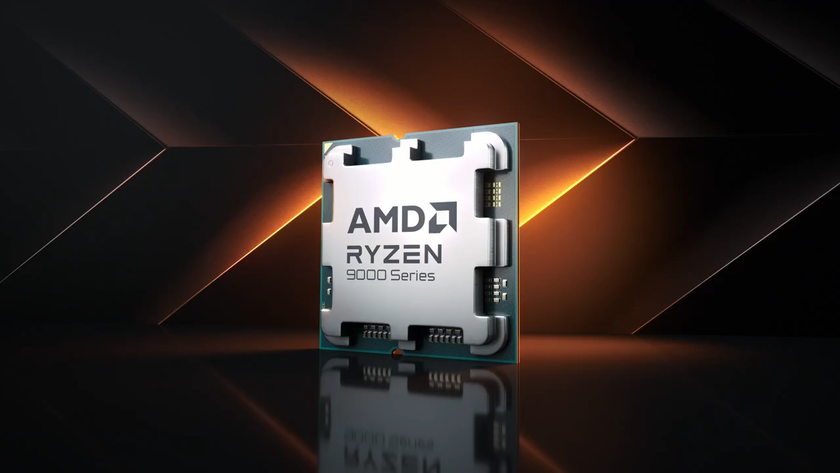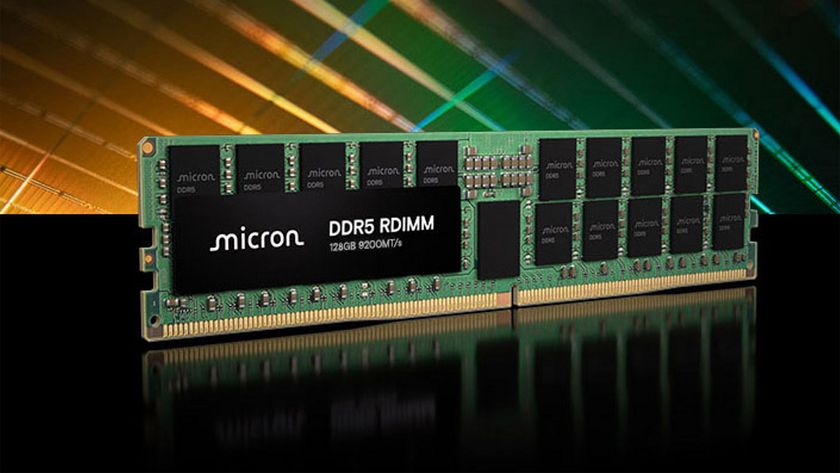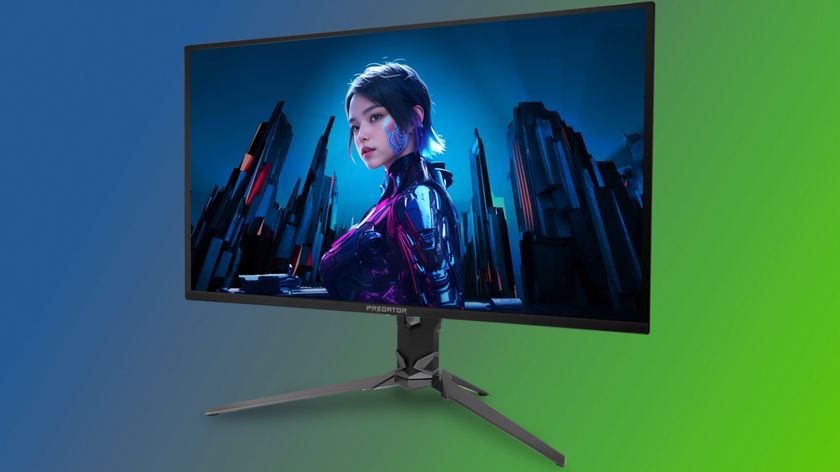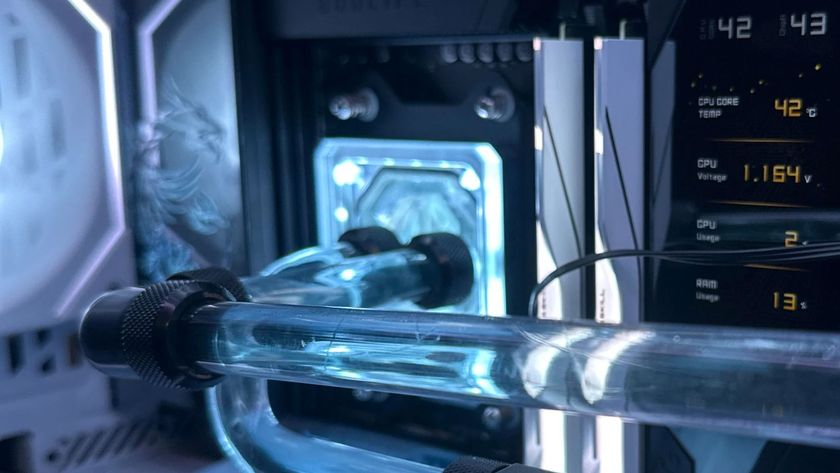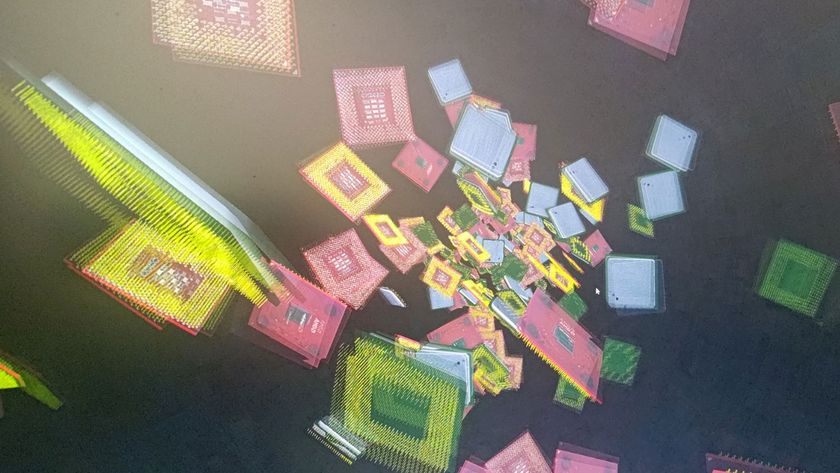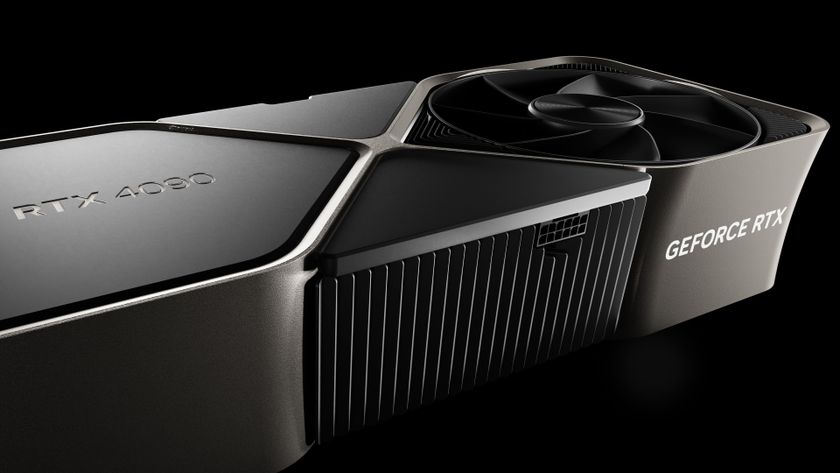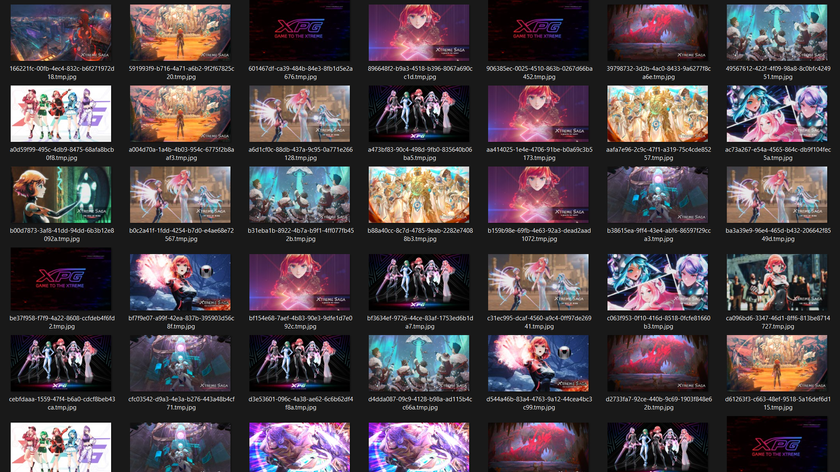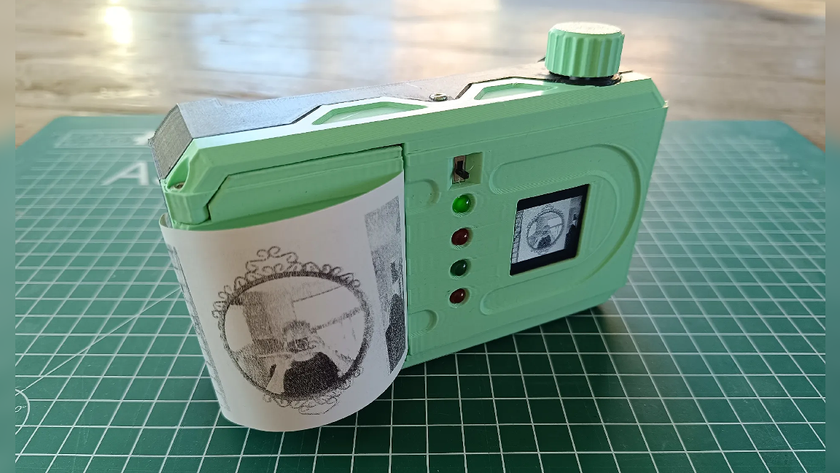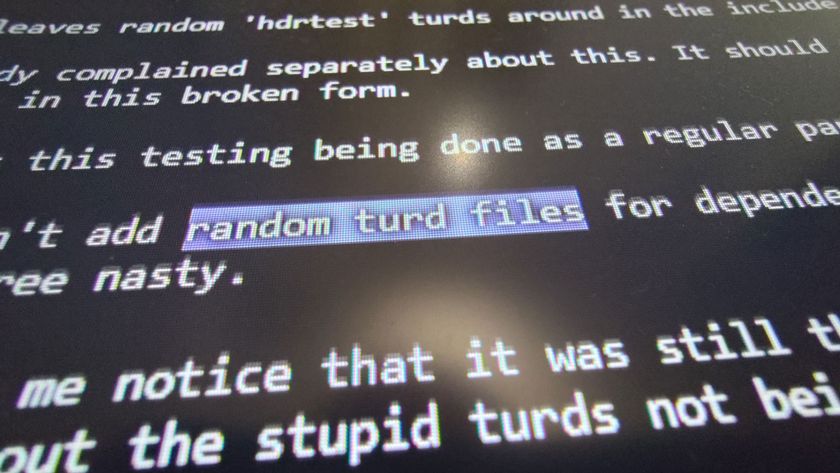Nvidia's 50-series laptop launch looks bumpy: slipping ship dates, game crashes, and delayed review units
Another black eye for Blackwell?

There's no nice way to say it: Nvidia's RTX 50-series laptop GPU launch has been messy. For potential buyers, it's a mix of drivers that aren't fully baked and what we expect will be very limited amounts of stock. Behind the scenes, laptop manufacturers have seemingly been scrambling to get these things ready, with multiple delays.
The first reviews of Nvidia RTX 50-series laptop GPUs have been trickling out this week, with exclusive YouTube videos followed by limited reviews of the GPU as a component, and finally the laptop reviews today, squeezing into the end of a promised March launch window.
But with reviews live, I can tell you this: The Blackwell laptops don't feel totally ready. This is so much the case that we ran our Razer Blade 16 review (featuring an RTX 5090 Laptop GPU) without a score, warning readers to hold off until the drivers get better. Razer’s laptop had issues running two of our game benchmarks, and you shouldn't spend so much money on a system that we can't confidently say will run your games.
Granted, this also assumes you'll be able to get your hands on one.
Driver issues
In our testing, we found that the Blade 16 couldn't run Borderlands 3. Claptrap rolls around the screen as the shaders load, and then it crashes before it hits the main menu. Nvidia told me that the Borderlands problem was a known issue. (Though for some reason, it worked on the Gigabyte Aorus Master 16.)
Our other big issue was Red Dead Redemption, which would crash at the same point in every benchmark at 1080p. Nvidia suggested verifying the files to ensure the installation wasn't corrupted, but this didn't work for us. We tried fresh downloads of the game and even multiple launchers, but we couldn't get it to work. It was also suggested we try Vulkan over DX12, though DX12 was working at higher resolutions.
Most games that we tested did work. But we haven't had any systems in recent memory that had issues like this with more than one benchmark, and we expect that that is due to the current state of the Blackwell drivers. It's something we've also noticed with our desktop RTX 50-series testing, and it's enough to give us pause. A few updates will likely yield better results — we hope.
When are these launching?
Today's review date, plus some recent pre-orders opening (Alienware sent out a press release on Tuesday for the availability of the Alienware 18 Area 51), lets Nvidia plausibly say that it fulfilled its promise that these would be "Available starting March 2025."
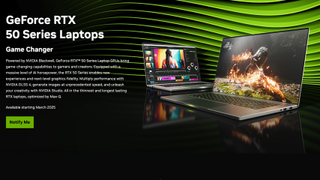
But it's unclear to me when you'll see a lot of them. I asked Razer multiple times when the Blade 16, which I was reviewing, would launch, but didn't get a response. As of this writing, Razer's website says it will ship April 30 as our review unit was configured (with a 5090), and April 14 with a 5080. A Razer representative told Tom's Hardware that "The official on-sale date is March 31st. In terms of availability, that [April date] reflects the estimated status of our backlog. So if you are to order today, that is when you will are estimated to get one."
That Alienware 18 Area-51? As of this writing, Dell's website is showing April 24 delivery dates. Lenovo has ship dates for the Legion Pro 7i Gen 10 in the second week of April, though that may shift depending on where you live.
Over at Newegg, the Gigabyte Aorus Master 16 has a March 31 release date, so you will theoretically be able to order that laptop in March. From what I'm told, though, inventory will be limited, and many of Gigabyte's other retail partners may not have stock that day.
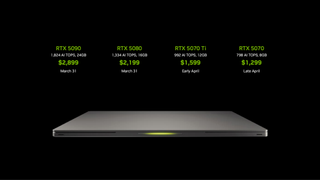
Those later release dates may be a good thing though, since the drivers need some work. Nvidia's engineers may have those fixes out by the time most systems might arrive in buyers' hands.
Stay On the Cutting Edge: Get the Tom's Hardware Newsletter
Get Tom's Hardware's best news and in-depth reviews, straight to your inbox.
Confusion behind the scenes
Not to get too inside baseball, but the events we saw leading up to this launch don't give us a ton of confidence.
In time for the embargo, we received two systems: the Razer Blade 16 and the Gigabyte Aorus Master 16. (The latter didn't arrive in time for us to finish testing in time for the embargo. We plan to have our review up soon). But we were in talks about two more systems that were repeatedly delayed, often without an explanation.
Some sources suggested long before we ever got a machine that there had been multiple delays. We didn't expect these systems to be so in flux that we would be given different shipping dates three times. Another system was delayed into next month.
Typically, this doesn't affect you, the person who might buy these laptops. Like we said, it's inside baseball information. But what it shows is that these systems are coming in hot, and you should keep an eye out for updates on drivers to ensure everything is smooth.
Another stain on Blackwell
These issues follow what has been, at best, a tumultuous launch for Nvidia's RTX 50-series gaming GPUs. The desktop side has been rocky, with limited availability leading our GPU editor Jarred Walton to say that "the current GPU landscape is a veritable wasteland, filled with scalpers and scam sellers." (History repeats itself!) Nvidia made $130 billion last year, 89% of that from the data center unit, and it's clearly prioritizing Blackwell B200 and now Blackwell Ultra B300 production ahead of its consumer GPUs. That makes sense from a financial perspective, but it means consumer GPU prices and availability are hosed.
At launch, some RTX 5090, 5090D, and 5070 Ti desktop GPUs shipped with missing render output units, or ROPs, reducing performance due to production issues, which Nvidia says have been corrected and will not affect its laptop GPUs. The 5090, 5080, and 5070 Ti were also plagued by black screen issues and blue screens of death until they were resolved with a driver update — that was after we shipped back a "malfunctioning" 5090 to an AIB, only later to hear about a VBIOS update to fix the problems.
Even though these laptops are arriving a bit later than expected, the whole release still feels rushed. Perhaps, after a few driver updates, all of our games will work without issue. But as it stands, you should wait and make sure fixes get rolled out before splurging on any of these very expensive laptops. Again, that's assuming you can even find them in stock at reasonable prices — margins on mobile consumer GPUs aren't likely to be much higher than on the desktop RTX 50-series GPUs, so the chips are in the same boat relative to AI and data center production.
The laptop we spent the most time with so far, the Razer Blade 16, has plenty of good points: It's well-built, has a lovely display, and the battery life is nice for a gaming laptop – perhaps the best part of the RTX-50 series upgrade, in my book. I actually played games without the power cable plugged in. The Blade 16’s port selection is also great. The Gigabyte Aorus Master 16, which we're still testing, also doesn't seem like a slouch.
But the RTX 5090 isn't a huge step up over the RTX 4090 Laptop GPU on pure performance. The conversation gets different when you bring DLSS with Multi Frame Generation into the picture, which Nvidia is pushing heavily, but that's a rather controversial discussion. As we noted in our MFG testing with the RTX 5090 and RTX 5080, you can't take the published numbers at face value. It's the combination of base rendering speed and latency that defines the experience, and that can vary quite a lot among games that support the feature.
I'm hoping that in a few weeks, we'll be able to move on from this launch. But given the current desktop GPU situation, that might be more than a little naïve. Out of the gate, Blackwell RTX laptops don’t feel like they’re off to a strong start, and if desktop Blackwell is any indication, things might not improve significantly for months.
Andrew E. Freedman is a senior editor at Tom's Hardware focusing on laptops, desktops and gaming. He also keeps up with the latest news. A lover of all things gaming and tech, his previous work has shown up in Tom's Guide, Laptop Mag, Kotaku, PCMag and Complex, among others. Follow him on Threads @FreedmanAE and Mastodon @FreedmanAE.mastodon.social.
-
Mindstab Thrull Half of what I'm seeing reported feels like Intel's Alchemist growing pains when it came out. But this is Nvidia and GPU's have been their bread and butter for decades. Come on guys, get with the program!Reply -
Alvar "Miles" Udell Biggest thing against them though is the clearance sales on the RTX 4000 series. Granted you won't get the ability to generate more artificial frames, but it's a very worthy tradeoff.Reply -
JTWrenn I wish Nvidia would be more open about all of this. Starting to feel like they rushed Blackwell on general to keep the AI pump running and gaming gpus paid the priceReply -
usertests Reply
That's the privilege of overwhelming market dominance.JTWrenn said:I wish Nvidia would be more open about all of this. Starting to feel like they rushed Blackwell on general to keep the AI pump running and gaming gpus paid the price
I'm not even mad. Why would they prioritize gaming GPUs when the same silicon can make 10-30x more revenue as an AI accelerator, and they have to sell them quickly before the bubble pops? The only reason is to maintain some level of goodwill so they can pivot back to gaming after the bubble pops, but gamers have demonstrated they will withstand any level of abuse from Nvidia and come back for more. If they lose a significant chunk of mindshare, they can use the untold billions they made on AI to compete hard with AMD (Intel is not even a competitor). -
M0rtis The 5090 laptop series kind of proves that the architecture improvements are minor for this generation. Both laptop chips - 4090 and 5090 use the 4080 and 5080 dies respectively. Both are capped at 175W power draw which is under the limit for their desktop variants i.e. both laptop GPUs are performing under their capabilities due to power limitations.Reply
The benchmarks I have seen seem to put the 5090 5-10% of the 4090 which is what the performance uplift due to architecture improvements indicate, while their desktop counterparts can draw more power for a slightly larger performance uplift over the previous gen.
While Im not a fan of the MFG on the desktop, I kind of think its nice to have on a laptop where a smaller screen and inability to upgrade makes frame gen more viable. -
usertests Reply
The best thing about this generation is the support for 3 GB GDDR7 modules, which have only been used in the laptop 5090 but will hopefully make their way into some desktop GPUs. No reason to bother with 128-bit 8 GB cards if 12 GB is coming relatively soon.M0rtis said:The 5090 laptop series kind of proves that the architecture improvements are minor for this generation. -
terroralpha Reply
there are ZERO improvements. the 5080 and 4080 super have similar core counts and perform almost exactly the same. the small lead the 5080 gets in some scenarios is due to the memory advantage of GDDR7. if you downclock the memory on the 5080 to around the same bandwidth as the 4080 super, they become the same cardM0rtis said:The 5090 laptop series kind of proves that the architecture improvements are minor for this generation. Both laptop chips - 4090 and 5090 use the 4080 and 5080 dies respectively. Both are capped at 175W power draw which is under the limit for their desktop variants i.e. both laptop GPUs are performing under their capabilities due to power limitations.
The benchmarks I have seen seem to put the 5090 5-10% of the 4090 which is what the performance uplift due to architecture improvements indicate, while their desktop counterparts can draw more power for a slightly larger performance uplift over the previous gen.
While Im not a fan of the MFG on the desktop, I kind of think its nice to have on a laptop where a smaller screen and inability to upgrade makes frame gen more viable.
i've been in the build your own PC hobby since the geforce 4 days. this is the second time there have been zero performance uplifts outside of the halo card. ironically, the same happened when i first got into the hobby. lower end geforce 4 cards were basically rebranded geforce 2 cards

